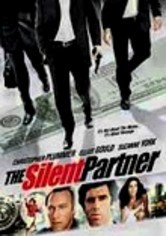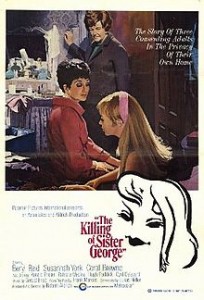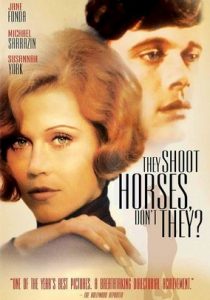The Silent Partner-1978
Director Daryl Duke
Starring Elliott Gould, Christopher Plummer
Top 250 Films #196
Scott’s Review #1,120
Reviewed March 10, 2021
Grade: A-
The Silent Partner (1978) is an exceptionally thrilling film that is relatively unknown to most moviegoers but is well-regarded by cinema lovers, especially fans of 1970s relics.
Watching the film in tandem with Brian DePalma’s clever and steamy Dressed to Kill (1980) one will immediately notice some similarities and will be able to draw comparisons.
Might have DePalma even patterned his film after The Silent Partner?
Even the finest of directors borrow snippets of greatness from other directors. That’s the way it works.
It’s a shame so few realize that the film even exists.
Starring Elliott Gould and Christopher Plummer, admittedly the late 1970s was not the best-known time for Plummer but saw Gould in his heyday.
The film also is peppered with notable sequences reminiscent of Frances Ford Coppola’s 1974 masterpiece, The Conversation.
I can best describe the film as a Canadian heist film but this might imply that it’s cookie-cutter or generic in some way. It’s not. It’s not even a “guy film”- it’s way more cerebral than that.
There is a style and momentum in The Silent Partner that is individual with unique and unexpected trimmings along the way. The cat-and-mouse dynamic adds trickery and a murky nature that makes the film work.
Daryl Duke, unfamiliar to me and primarily known for television work, is at the helm as director, crafting from a screenplay written by Curtis Hanson.
Hanson adapted his work from a Danish novel and should be familiar to movie fans for his participation in the thriller The Hand That Rocks the Cradle (1992) and the neo-crime thriller L.A. Confidential (1997).
Miles Cullen (Elliott Gould) plods along during the holidays at his bank teller job at the local mall. It’s Christmastime and Miles is down because he attempted to ask out his co-worker Julie Carver (Susannah York), who is more interested in dating their married boss- for now!
After discovering a secret plot by the mall Santa Claus (Christopher Plummer)to rob the bank at which he works, Miles cunningly hides a large portion of the cash in his safe deposit box.
After the robbery, it is discovered that Santa is a deranged master criminal named Harry Reikle. He discovers that he’s been duped by Miles and puts horrific pressure on Cullen to hand over the money.
I adore the added romantic angle that blossoms amid the cat-and-mouse antics between Miles and Harry. No sooner than Julie softens toward Miles a mysterious and gorgeous woman enters the scene claiming to know Miles’s father.
Elaine (Celine Lomez) is flirtatious and immediately wants to bed Miles but what is she up to?
From a character perspective, Miles and Harry are great studies. Related to the aforementioned films, Miles exhibits qualities similar to Harry Call in the brilliant The Conversation. Suspicious, paranoid, and intelligent, he is the perfect counterpart to Harry.
Michael Caine played a transvestite in Dressed to Kill and Harry’s mascara, long nails, and fishnet top made me feel he possessed those qualities though the film never confirms this.
Psychologically speaking, Harry is disturbed based on his treatment and the perceived hatred he expresses towards women. He picks up and beats a young prostitute unconscious.
Is there a gay vibe? Most certainly especially when Harry looks longingly at Miles during more than one scene as he watches Miles in his apartment and proclaims, “You know we are partners, right?”
Plummer is great and I can’t recall seeing any role of his being so villainous and he plays it superbly. A far cry from the musical patriarch in The Sound of Music (1965).
The Silent Partner contains one of the most gruesome murder scenes I’ve witnessed in cinema. It involves decapitation and a fish tank and is so shocking and unexpected that viewers may audibly gasp during the scene.
Nearly rivaling this is the great finale and a justified death on the mall escalator. It is fun to revisit the time when malls were flocked to, especially during the Christmas holidays.
The Santas, decorations, big crowds, and music made The Silent Partner walk down memory lane.
A great and sadly lost gem, The Silent Partner (1978) is a film for movie lovers to check out, embrace, and fall in love with. A perfect watch would be around the Christmas holidays.
Hopefully, with due word of mouth, this film will be rediscovered.


